News
Similan Islands Liveaboard Trip Report: Day 1
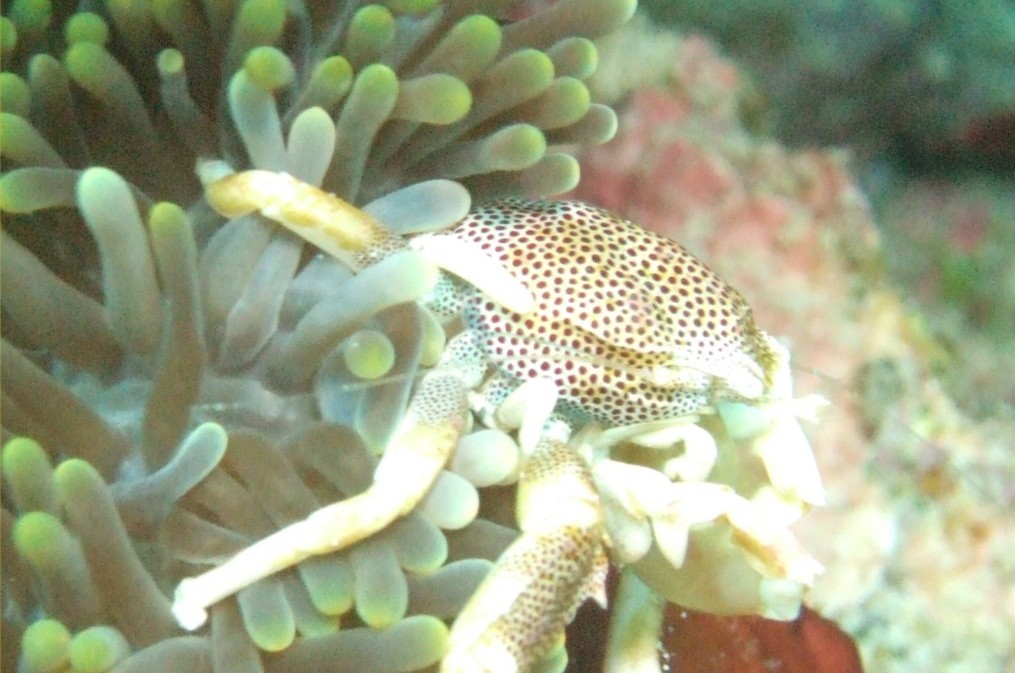
Read the prologue to this trip report here.
———————————————————————————————————————————————————————
I woke during the night to a sudden silence – we had arrived at our first dive site and the engines had been turned off.
A Bang! Bang! Bang! at the door was followed by a voice shouting “Dive Briefing!”. It was 7:30am. I made my way to the meeting/eating/briefing area and grabbed some toast and a cup of tea. The dive groups had been sorted and were written on the white board. Next to the board there was a sketch of the first dive site, Hide-away Corner. Mats started the briefing by describing the site and what we might expect to see; it was an easy site and was always used as the first dive site to make sure everyone was comfortable (more likely to make sure the divers were as experienced as they said they were). There were two moorings lines, one at each end of the reef; we would drop down and go with the current at the south end of the reef.
My group, which included my travelling companions Neville and Sharky, was the third group to dive. The groups would take turns in who went in first; I had asked if we could have the Thai dive master ‘Jay’, pronounced ‘Yai’, as I had dived with him before and he new where every little thing was.
Breakfast at Similan’s
The first group entered the water at around 8am, followed quickly by the second and then by our group. A couple of the divers were checking their buoyancy and one diver was having trouble equalising, so we headed on. The site itself is a combination of coral reef, sand beds and a couple of large rocky outcrops covered in all types of corals. We swam along the reef spotting the usual reef dwellers: Angel fish, Wrasse, Lionfish and plenty of little fish I didn’t know the name of. The sandy areas were covered with spotted garden eels. We circled the first big rocky outcrop a few times admiring the amount of life in all shapes and sizes before we carried on to the rest of the reef. It wasn’t long before the reef thinned out and time and air were against us. Dive number one over.
Once the last person was back on the boat, out came breakfast. The chef, Mama Lek, always cooked too much. Thai food was available at request, but otherwise it was a pile of bacon, sausage, eggs, ham and toast (whoops! There goes the diet). After breakfast I went back down to my cabin to review my photos from the dive and grab a quick snooze.
Bang! Bang! Bang! “Dive Briefing!”
It was 10:30am, and time to head back upstairs for the next briefing. Dive two was going to be Elephant Head Rock. This dive was going to be quite different from the first; it consisted of a group of large boulders creating swimthroughs and caverns. We entered the water on the south side, where there were a smattering of corals on the huge boulders. We swam around following Jay to the first of the swimthroughs; it wasn’t a long swimthrough – none of them were – but it did provide shelter for a range of fish such as oriental sweetlips, parrotfish, grouper and angel fish. Shoals of blue lined snapper hung around outside.
After a few swimthroughs time and air was against us again, so we hung around in the shallows in awe of the amount of fish, such as a huge shoal of yellow fusilier sheltering from the current, and parrotfish passing us ejecting more sand for the fine beaches. Up went the DSMB and we followed three minutes later.
Back on the boat it was lunchtime. There was far too much food, but that wasn’t a problem, as I can’t resist good cooking. Then it was time for a rest on the sun deck to dry off in the midday sun, but not for too long; it was hot – really hot!
East of Eden
Dive number three was to be East of Eden, a similar sort of reef dive as earlier but with even more coral. The site is mainly coral reef with some small sandy areas, and a large rocky outcrop covered in all types of corals, both soft and hard, surrounded by large fan corals. We swam along the reef spotting the usual reef dwellers: Angel fish, Wrasse, Lionfish, Nudibranch, Coral Filefish, anemone crabs and triggerfish. Along the bottom of the reef I spotted a blue spotted stingray where the angled bed flattened off at around 27m. The sandy areas were again covered with spotted garden eels, and in the middle of the largest sand covered area there was a small patch of coral where a Giant Moray was residing.
I had already encountered this Moray on a previous dive to this site and warned everyone that it does like to come out and meet the first diver, and that you should keep your fingers hidden. Sometime during March 2005, one of the dive masters, who used to feed it sausages as it came out, lost his thumb, as it just looked like another sausage to the moray. Morays’ teeth point inwards, so the harder you pull the deeper they cut. He struggled and his thumb was the morays breakfast. There had already been divers through by the time we reached it and it stayed put, much to everyone else’s relief. We finished up in the shallows after an overwhelming amount of life and colour. Dive number three was over.
Donald Duck Bay
Back on the boat we were asked if we wanted to go ashore to Donald Duck Bay on Koh Similan. Everyone decided that this would be a good idea; dry land for the first time in 24 hours seemed quite appealing. The tender was launched and everyone went ashore. While everyone else headed up to the viewpoint, I decided to go and look for some of the large Water Monitor Lizards that live on the island. There used to be a large flooded area a couple of hundred metres from the shore where the lizards could be found, but since the Tsunami it has been drained. Despite this I did manage to see three lizards, the biggest of which was around 90cm. Soon our time ashore was up and we had to head back to the boat.
Turtle Head Rock
The next dive briefing was at 6:30pm. Dive number four was to be Turtle Head Rock (they seem to like to name rocks after what they resemble in the Similan Islands). It was going to be shallow and shorter than the daytime dives. Torches were supplied but weren’t brilliant, so I used my little BCD torch instead.
We entered the water at 7pm. For most of the dive we remained quite close as a group, and eventually I decided I was happier with a little more space. Every time I got to what I felt was a comfortable distance from everyone else, someone would flash their light in my direction to let me know that they thought there was something interesting enough to get a photo of (usually another lionfish, and in my opinion there were plenty of those to see during the day dives).
Sleeping parrot fish in their protective bubbles could be spotted all over the reef. The site was a mixture of corals and boulders, with loads of places for fish to hide. Surprisingly I didn’t see any crustaceans.
Oh well, three more night dives on this trip to go. The 40 minutes recommended dive time was over fairly quickly and we returned to the boat and was welcomed by yet more food than anyone could eat. After the meal we sat on the sun deck looking at the stars and talking over what we had seen during the day (and it wasn’t just about the marine life). It was then time to turn in, as we were going to be up early again tomorrow.
Read Similan Islands Liveaboard Trip Report: Day 2 here.
Marine Life & Conservation Blogs
Book Review: Shells of the World

Shells of the World: A Natural History by M.G. Harasewych
Shells of the world is a guide to the world of marine, shelled molluscs. And what a varied and interesting world it is. Some of my favourite things to find on a dive are detailed in this book, including disco clams (or Electric File Clams as they are correctly names), the cephalopods, giant clams and sea hares. There are also many on my wish list, top of which is the Nautilus.
Each chapter provides a detailed description of the species, along with beautiful images. You can dive deeper and discover where they live, both with global distribution and the habitat they prefer. Learn about their diet, reproduction and diversity.
Having dipped in and out of this lovely book over the past few weeks, it has inspired me to learn more about this group of animals that we see on most divers, wherever we are in the world. Some of the shells are incredibly intricate and beautiful. I have always agreed with never collecting, or touching, marine life. The description of a certain set of cone shells should be a warning to those that are happy to pick up marine life! One of the cone shells has a local name called the cigarette snail. Why? Because once the venom is in your system from this animal, you only have time to smoke one cigarette before the affects of the venom are fatal!
What the publisher says:
Mollusks are invertebrate animals with a remarkable natural history and a rich fossil record, and their shells are prized for their breathtaking variety and exquisite beauty. Shells of the World provides a wide-ranging look at the incredible diversity of marine mollusks. An informative introduction outlines the lineages covered, followed by a directory section, split into classes, that profiles a broad selection of different taxa to give a sense of their sheer numbers and variety.
- Features hundreds of beautiful color photos, depicting both the live animals and their shells
- Discusses mollusk evolution, anatomy, life cycles, behavior, and ecology
- Describes unique characteristics, distribution, habitat, and size
- Provides valuable insights into the conservation of the world’s marine mollusks
- Ideal for malacologists and shell collectors everywhere
About the Author:
M. G. Harasewych is research zoologist emeritus and former curator in the Department of Invertebrate Zoology at the Smithsonian Institution’s National Museum of Natural History. A fellow of the American Association for the Advancement of Science, he is the author (with Fabio Moretzsohn) of The Book of Shells: A Life-Size Guide to Identifying and Classifying Six Hundred Seashells.
Book Details
Publisher: Princeton University Press
Hardcover
Price: £25
ISBN: 9780691248271
Published: 9th April, 2024
Gear News
Go anywhere with Stahlsac
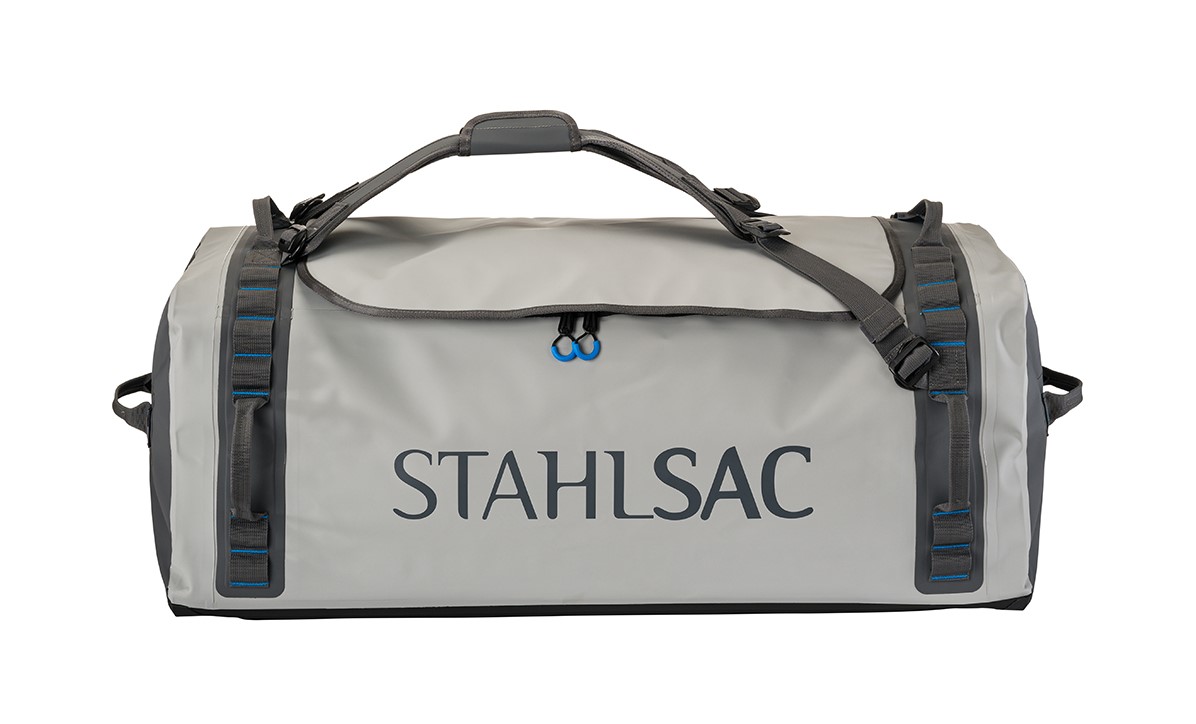
Stahlsac dive bags and travel luggage are built for our community of divers, surfers, kayakers and outdoor explorers who need bags that are constructed with durability, toughness, and 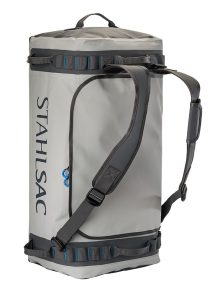 the highest quality the industry has ever seen. We were founded by one man determined to build better watersports and dive bags, and today, that mission is carried on by many. Adventure doesn’t just present itself; it requires discovery. When we design dive bags, we make sure they are tough enough for you to explore in all conditions—warm and cold, wet and dry—to the nearest and farthest reaches of the earth. And for those times you want to push the boundaries of adventure, Stahlsac dive bags make sure you can truly GO ANYWHERE.
the highest quality the industry has ever seen. We were founded by one man determined to build better watersports and dive bags, and today, that mission is carried on by many. Adventure doesn’t just present itself; it requires discovery. When we design dive bags, we make sure they are tough enough for you to explore in all conditions—warm and cold, wet and dry—to the nearest and farthest reaches of the earth. And for those times you want to push the boundaries of adventure, Stahlsac dive bags make sure you can truly GO ANYWHERE.
Abyss Duffels
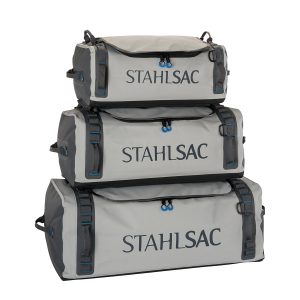 Made to be your partner-in-crime on every adventure, Stahlsac’s Abyss Duffels protects your gear from Mother Nature’s worst. Tough and 100% waterproof with double-TPU nylon material that shrugs off daily wear-and-tear, and RF-welded seams further boost the bag’s potential for lifelong exploring. Get Wet. Get Lost. Go Anywhere with Abyss.
Made to be your partner-in-crime on every adventure, Stahlsac’s Abyss Duffels protects your gear from Mother Nature’s worst. Tough and 100% waterproof with double-TPU nylon material that shrugs off daily wear-and-tear, and RF-welded seams further boost the bag’s potential for lifelong exploring. Get Wet. Get Lost. Go Anywhere with Abyss.
- A weatherproof duffel for trips, travel, and adventure
- Ultra-durable double-TPU nylon protects your gear
- Material repels water and keeps your equipment dry
- RF-welded seams are flush, tough, and waterproof
- Removable straps transform duffel into backpack
- Zippered internal stow compartments carry essentials
- External zippered flap is easy to open and close
- Welded external handles make transporting a breeze
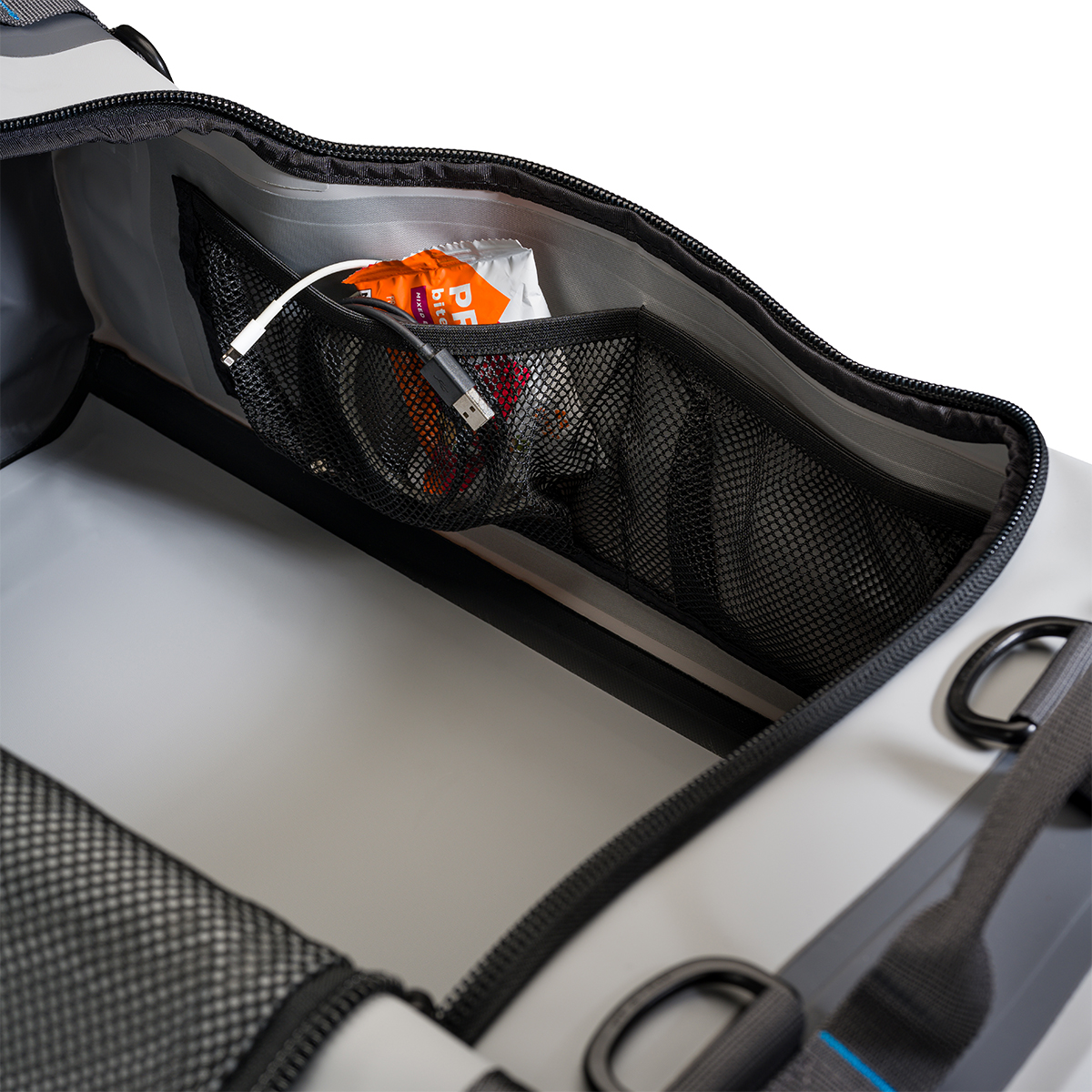
Panama Mesh Backpack
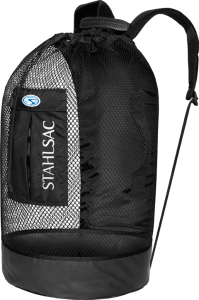 The most copied design in scuba diving, the Stahlsac Panama Mesh Backpack is the “original” design and features two high-density foam padded shoulder straps, extra durable polyester mesh, duffel bag handles and our unique zippered dry pocket inside that combines with a wet pocket outside. The bottom’s built from reinforced 18-gauge PVC nylon to combat the wear and tear of your active coastal lifestyle, and, as a bonus in every bag, we supply a 12″ x 12″ mesh drawstring satchel for extra stowing utility. Pack up your beach kit and go.
The most copied design in scuba diving, the Stahlsac Panama Mesh Backpack is the “original” design and features two high-density foam padded shoulder straps, extra durable polyester mesh, duffel bag handles and our unique zippered dry pocket inside that combines with a wet pocket outside. The bottom’s built from reinforced 18-gauge PVC nylon to combat the wear and tear of your active coastal lifestyle, and, as a bonus in every bag, we supply a 12″ x 12″ mesh drawstring satchel for extra stowing utility. Pack up your beach kit and go.
- Density foam padded shoulder straps
- Outside wet/dry pockets
- 2 Carry handles
- Tough, snag-resistant polyester mesh
- Reinforced PVC bottom
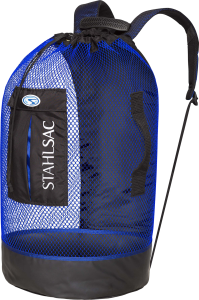
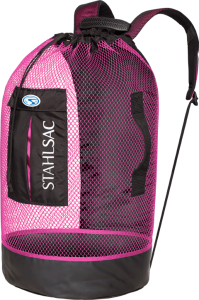
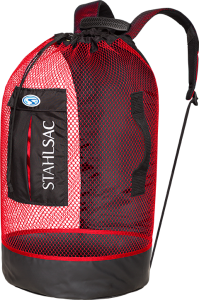
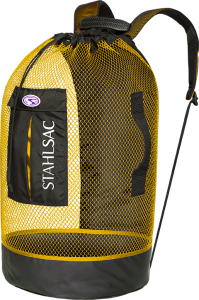
For more information about Stahlsac bags, visit www.stahlsac.com/dive-bags.
Sea & Sea is the home of Stahlsac and other leading diving brands in the UK.
-

 News3 months ago
News3 months agoCapturing Critters in Lembeh Underwater Photography Workshop 2024: Event Roundup
-

 Marine Life & Conservation Blogs3 months ago
Marine Life & Conservation Blogs3 months agoCreature Feature: Swell Sharks
-

 Gear Reviews4 weeks ago
Gear Reviews4 weeks agoGEAR REVIEW – Revolutionising Diving Comfort: The Sharkskin T2 Chillproof Suit
-

 Blogs2 months ago
Blogs2 months agoMurex Resorts: Passport to Paradise!
-

 Blogs3 months ago
Blogs3 months agoDiver Discovering Whale Skeletons Beneath Ice Judged World’s Best Underwater Photograph
-

 News3 months ago
News3 months agoPADI Teams Up with Wellness Brand Neuro to Drive Ocean Change and Create a Blue State of Mind
-

 Gear Reviews3 months ago
Gear Reviews3 months agoGear Review: Oceanic+ Dive Housing for iPhone
-

 Marine Life & Conservation2 months ago
Marine Life & Conservation2 months agoSave the Manatee Club launches brand new webcams at Silver Springs State Park, Florida


















